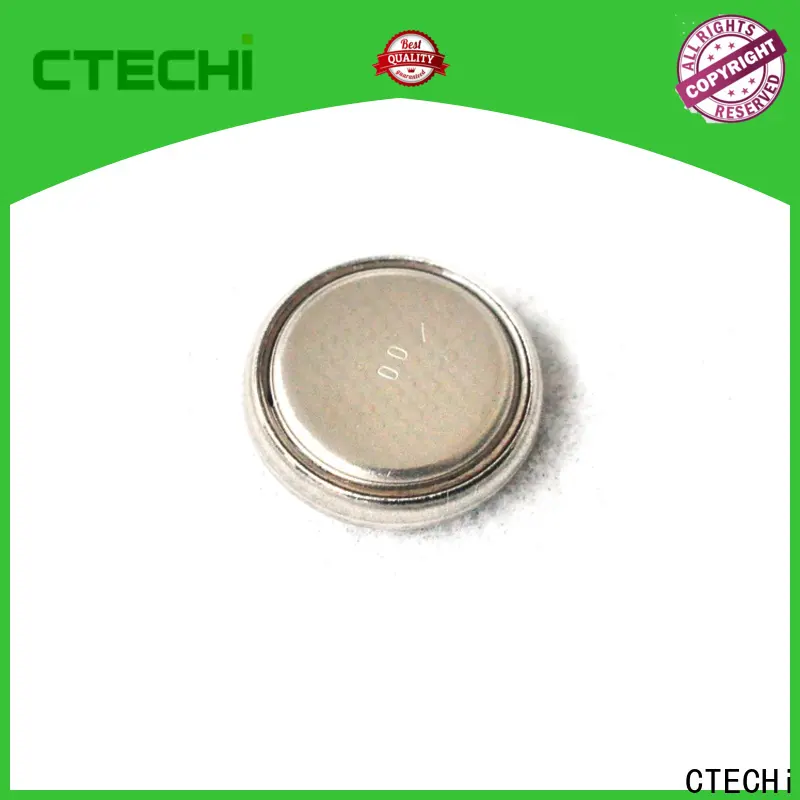durable panasonic lithium batteries series for flashlight
Product Details
BR1225A can be customized for additional processing, add solder chip terminals, insulation packaging and configuration type, the model as following: BR1225A/FAN, BR1225A/HBN, BR1225A/BN, BR1225A/HAN. The BR1225A has a voltage of 3V and a capacity of 48mAh. It can be used in various devices in the life. We test the data of this device. Here are some test data presentations.
From the Temperature Characteristics below, you can see how the battery operates at the same load and at different temperatures.
When used at an ambient temperature of -10 °C, the voltage is 2.3V. After using 100h, we can see that the voltage rises to a peak of 2.5V. After 200h, the voltage begins to drop to 2.45V. After 300h, the voltage drops rapidly. To 2.4V, and the apparent decline is accelerated until the end of about 401h.
When used at an ambient temperature of 20 ° C, the voltage is 2.63V. After using 100h, we can see that the voltage rises to a peak of 2.749V. After 200h, the voltage begins to drop to 2.7V. After 500h, the voltage drops rapidly to 2.63V, and the apparent decline is accelerated until the end of about 590h.
When used at an ambient temperature of 60 ° C, the voltage is 2.75V. After using 100h, we can see that the voltage rises to a peak of 2.8V. After 200h, the voltage begins to drop to 2.78V. After 500h, the voltage drops rapidly to 2.73V, and the apparent decline is accelerated until the end of about 580h.
When used at an ambient temperature of 125 ° C, the voltage is 3V. After using 100h, we can see that the voltage rises to a peak of 3.15V. After 200h, the voltage begins to drop to 3.1V. After 400h, the voltage drops rapidly to 3V. And the apparent decline accelerated until the end of about 490h.
When used at an ambient temperature of 150 ° C, the voltage is 3.18V. After using 100h, we can see that the voltage rises to a peak of 3.2V. After 200h, the voltage begins to drop to 3.18V. After 400h, the voltage drops rapidly to 400h. 3.1V, and the apparent decline is accelerated until the end of about 490h.
-
3V 48mAh BR1225A Non-rechargeable Coin Cell High Temperatures Dimensions
-
Non-rechargeable Coin Cell High Temperatures Temperature 3V 48mAh BR1225A Characteristics
Application Scope
3V 48mAh BR1225A Non-rechargeable Coin Cell High Temperatures can be used in Memory Back up, Wire-less communication, Clock power, Electronical charging system etc. Data back-up power. TPMS, Intelligentized electricity meter, Gas meter, Water meter, Heat meter etc. SMOKE Alertor, Temperature sensor etc. Ocean telemetering system, location equipments etc. Night-vision devices, Tracking & Locating Devices etc.
-
3V 48mAh BR1225A Non-rechargeable Coin Cell High Temperatures TPMS
-
Non-rechargeable Coin Cell High Temperatures 3V 48mAh BR1225A clock
Other models of wide temperature battery
{{item.score}} Stars
{{item.pre}}%
{{item.nickname ? (item.nickname.slice(0, 2) + '*****') : item.source === 1 ? 'mall buyer' : '--'}}
{{item.comment_time}}
Review in the {{item.country}}
{{itemAttr.params_key}}: {{itemAttr.params_value}}
Contact us
we welcome custom designs and ideas and is able to cater to the specific requirements. for more information, please visit the website or contact us directly with questions or inquiries.
you might like
no data
Shortcut links
Products
Battery Accessories




